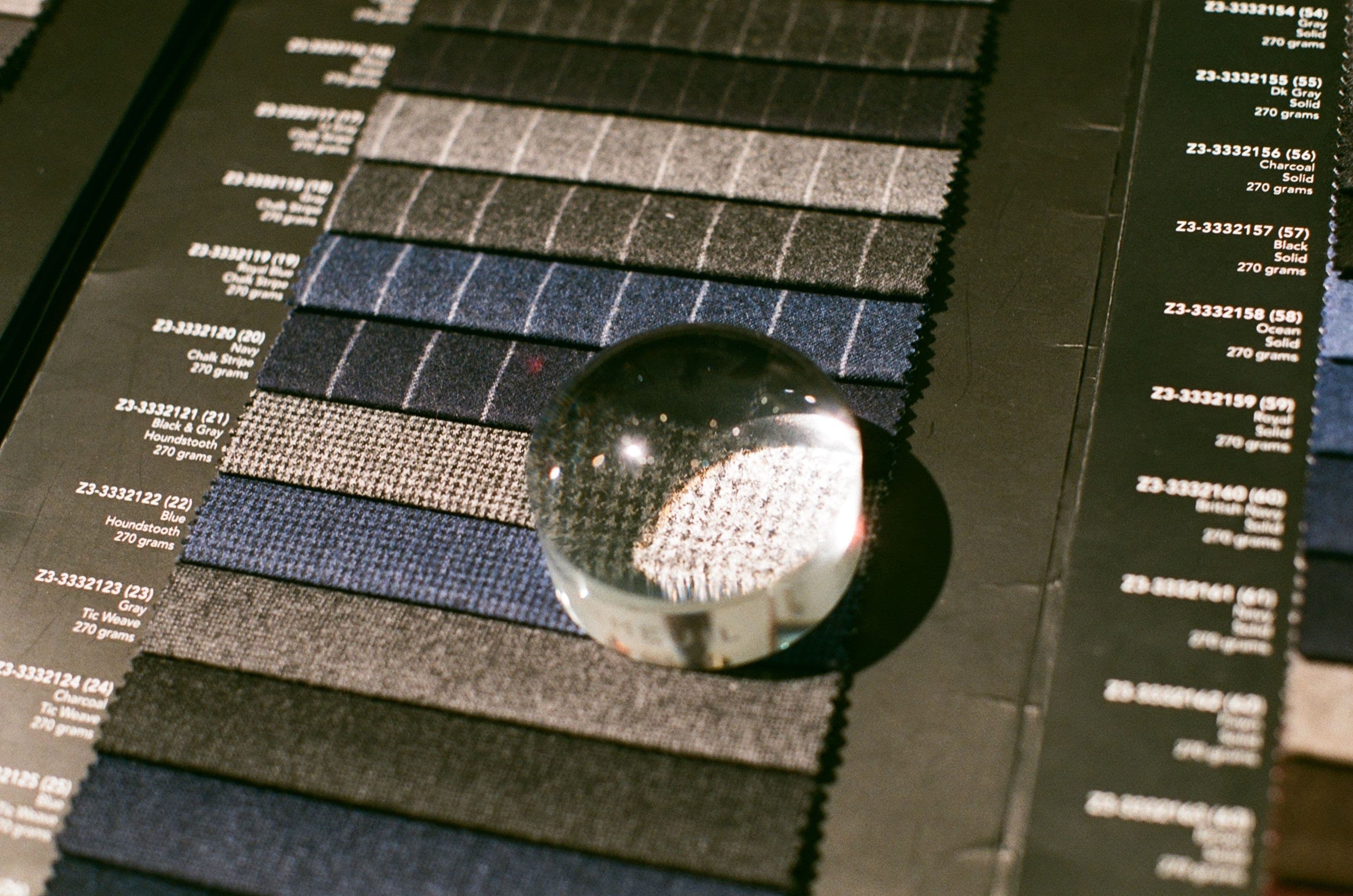Polyester fabrics are the most common material used in the textile industry. It is not hard to see why this is the case. Low-cost, durability, ability to be blended with other fabrics, and ease of production are the primary reasons for synthetic fibers being an industry favorite in the world of textiles.
The scale of synthetic textile production speaks volumes about its favorability. A report explains that in 2021, synthetic fibers accounted for about 64% of the 113 million tonnes of fabrics produced in that year.
That’s 72 million tonnes of synthetic fibers produced in a single year. Polyester was, by far, the largest fiber in the synthetic fiber category, accounting for 54% of global fabric production, or 60 million tonnes of polyester.
)](/_next/image?url=https%3A%2F%2Fstorage.googleapis.com%2Ftocco-cms%2FGlobal_fibre_production_d4fd581656%2FGlobal_fibre_production_d4fd581656.png&w=2048&q=75)
What is far more startling or concerning - if you can anticipate where this is going - is that only 14% of the 60 million tonnes of polyester fabric produced was made out of recycled materials. That means the world produced around 51.6 million tonnes of virgin polyester fabrics in a single year.
Why the need to shift away from synthetic fibers?
But really, if synthetic fibers like polyester have so many benefits in the textile industry, why should these numbers concern us?
Petrochemicals and climate crises
For one, polyester is a fabric made using polyethylene terephthalate (PET), which is the most abundant plastic available on the planet. It is notorious for being made out of petrochemicals or, simply, crude oil. Years of research confirm that petrochemicals have worsened today's climate and materials crises. Our future cannot (heavily and primarily) rely on petrochemicals and their byproducts.
Micro-plastics
Researchers from IPCB-CNR and the University of Plymouth conducted a study comparing the release of microplastics from four different polyester clothing items when washed or worn. The findings revealed that a conventional wash could release up to 4,000 fibers per gram of fabric, while 20 minutes of normal activity could shed up to 400 fibers per gram of fabric.
When extrapolated, these results suggest that an individual could release nearly 300 million polyester microfibers annually into the environment by washing clothes and over 900 million into the air by merely wearing them.
)](/_next/image?url=https%3A%2F%2Fstorage.googleapis.com%2Ftocco-cms%2Fmicrofibers_1_5cfea55979%2Fmicrofibers_1_5cfea55979.jpg&w=2048&q=75)
Polyester is more toxic than cotton
A study investigated various common clothing materials like cotton and polyester, identifying thousands of compounds, particularly focusing on those with skin-penetrating and toxic properties. Polyester samples exhibited significantly higher concentrations of these chemicals compared to cotton and blended materials.
For example, quinolines were found at concentrations 800 times higher in polyester than in 100% cotton garments, potentially posing health risks. Additionally, benzothiazole and benzotriazole, known for their acute toxicity, allergies, and irritations, were most concentrated in 100% polyester samples. These compounds can bioaccumulate in wildlife, be absorbed through the skin, and have been detected in urine samples from the general population.
Challenges faced by brands in sourcing natural fibers
The need to shift to more sustainable materials like natural fibers is there for all to see. However, the shift is not without its challenges.
Limited knowledge and access to suppliers
Brands often encounter challenges in sourcing natural fibers due to limited knowledge of suppliers and the complexities of supply chains. This can result in difficulties finding sustainable and ethically-sourced materials.
Geographic constraints and pricing pressures can further complicate the process. Currently, over 50% of fashion and luxury sourcing occurred in China due to its low manufacturing costs. As costs increased, diversification led to partnerships in other places like Vietnam, Indonesia, Latin America, and Eastern Europe. However, despite this diversification, China and Vietnam still contribute to over 50% of the total volume in fashion sourcing today.
Time-consuming research and sampling processes
The research and sampling processes are time-consuming, making it more challenging to source sustainable materials. Identifying reliable suppliers, ensuring quality, and meeting sustainability goals requires extensive research and testing. Customization and innovation efforts can add to the time investment.
Take organic cotton as an example. As noted in Textile Exchange’s Organic Cotton Market Report, the core principles of organic cotton farming are legally regulated. Only 1.4% of cotton produced globally is organic certified. This means you won’t easily find an organic cotton supplier as you would a supplier of regular cotton. Then comes the sampling process, which takes time too.
Cost concerns in sourcing and negotiation
Balancing quality with cost considerations can be tricky, and negotiating favorable terms with suppliers, especially for smaller brands, can be complex. Additionally, transportation and import costs, as well as the need for risk management, add to the overall expenses.
How can an AI-driven marketplace facilitate natural fibers research and sourcing?
For brands seeking sustainable fibers, the journey is indeed an arduous one. These problems necessitate the need for a solution that makes the research and sourcing process hassle-free and straightforward. At the forefront of this innovation is tocco.
Material research made 10x faster
Our platform uses AI to analyze vast amounts of data on materials, including their properties, environmental impact, and cost. This data can then be used to identify and recommend materials that meet the specific needs of each brand.
Cost and efficiency in sourcing
Brands can rely on tocco to significantly reduce research, sampling, and negotiation costs. They can negotiate competitive prices, optimizing procurement strategies through market data and insights.
We also offer the advantage of proactive risk mitigation, ensuring that brands can swiftly address supply chain disruptions and stay ahead in a dynamic market landscape.
Automated RFQs and direct messaging
Our platform streamlines RFQs, automating the request and response stages. This feature accelerates the procurement cycle and ensure efficiency in material sourcing.
In parallel, communication is key in any business transaction. Our feature of direct messaging enhances fast communication and clarity between brands and suppliers. Instead of relying on disjointed email exchanges, we provide a chatbot, chat function for real-time communication.
Resources
- A remedy to our microplastic epidemic? | tocco. (n.d.). https://tocco.earth/article/microplastic-epidemic/
- EU strategy for Sustainable and Circular Textiles. (2022, March 30). European Commission - European Commission. https://ec.europa.eu/commission/presscorner/detail/en/qanda_22_2015
- Goodrich-Blair, H. (n.d.). Microbial Odor Profile of Polyester and Cotton Clothes after a Fitness Session | Applied and Environmental Microbiology. Applied and Environmental Microbiology. https://journals.asm.org/doi/10.1128/aem.01422-14
- Luongo, G. (n.d.). Chemicals in textiles: A potential source for human exposure and environmental pollution. Retrieved September 20, 2023, from http://www.diva-portal.org/smash/get/diva2:850089/FULLTEXT02.pdf
- Palacios-Mateo, C., Van Der Meer, Y., & Seide, G. H. (2021). Analysis of the polyester clothing value chain to identify key intervention points for sustainability. Environmental Sciences Europe, 33(1). https://doi.org/10.1186/s12302-020-00447-x
- Textile Exchange. (n.d.). Preferred Fiber & Materials Market Report. https://textileexchange.org/app/uploads/2022/10/Textile-Exchange_PFMR_2022.pdf
- Future of Fashion sourcing (2022). BCG https://www.bcg.com/publications/2022/the-future-of-fashion-sourcing
- Organic Cotton Market Report (2022). Textile Exchange https://textileexchange.org/knowledge-center/reports/organic-cotton-market-report/








